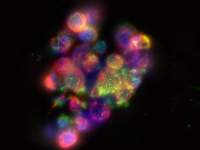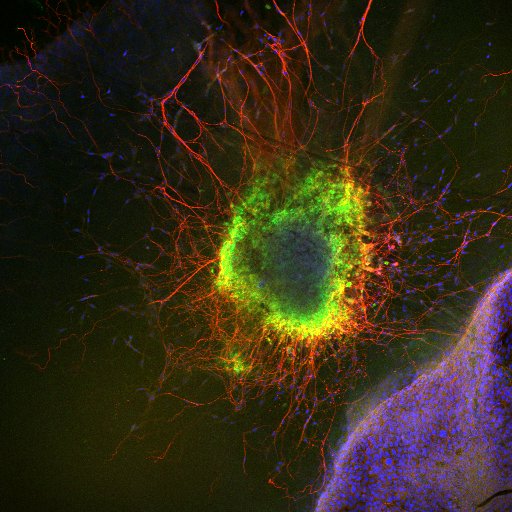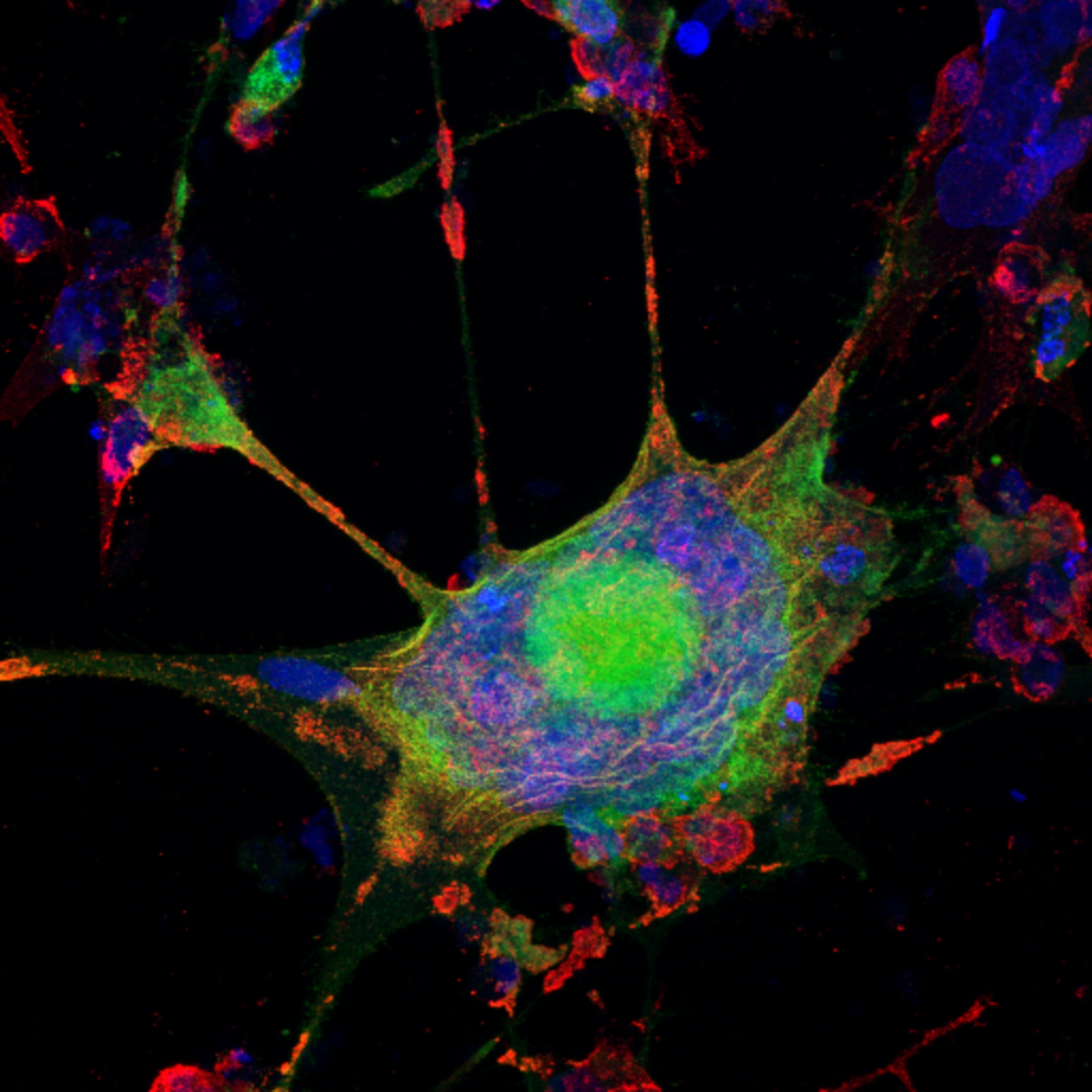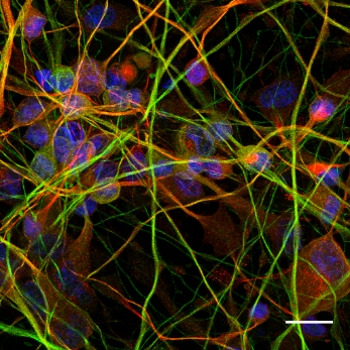Viejo-Borbolla lab
“Viral Immune and Neuromodulation” (VIN Lab)
Research Interests:
In the “Viral Immune and Neuromodulation” lab, we aim to understand how human viruses modulate these two systems. We mainly focus on human herpesviruses, including herpes simplex virus type 1, type 2, varicella zoster virus, Kaposi’s sarcoma-associated herpesvirus and human cytomegalovirus. We are interested in the viral modulation of extracellular proteins that play key roles in intra and intercellular communication, such as cytokines and neurotrophic factors as well as their receptors. We also investigate viral modulation of cellular receptors involved in the activity of the immune and/or nervous systems, such as killer cell immunoglobulin-like receptor, vanilloid receptors, etc. These proteins are essential to coordinate the host response to infection and are targeted by herpesviruses, playing key roles in infection control and pathogenesis. To achieve our goals, we apply a wide range of biochemistry, molecular and cell biology techniques such as protein expression and purification, surface plasmon resonance, chemotaxis, angiogenesis, cytotoxicity assays, etc.
We believe that working with others is fun and required to obtain great results, so we collaborate with many colleagues worldwide. Moreover, we know that the future of science requires training and mentoring the new generations of researchers, so we are always looking for bright, young minds out there. Finally, we embrace diversity since it is essential to create an open-minded, fruitful and successful environment.
The Team

Principal Investigator:
- Prof. Dr. Abel Viejo-Borbolla
Medizinische Hochschule Hannover (Hannover Medical School)
Institute of Virology, OE5230
Carl-Neuberg-Str. 1
30625 Hannover
Phone: +49 (0)511 532 4382 | Departmental Secretary +49 (0)511 532 6736
Laboratory +49 (0)511 532 4314 / 15 | FAX +49 (0)511 532 8736
Email: viejo-borbolla.abel@mh-hannover.de
About me (Abel Viejo-Borbolla):
I studied Biological Sciences (specialized in Molecular Biology and Biochemistry) at the “Universidad Autónoma de Madrid”, Spain. I was lucky to spend the last year of my BSc degree as an Erasmus Student at The University of Leeds (U.K.). Afterwards, I moved to the lab of Thomas F. Schulz (The University of Liverpool) to do my PhD with the co-supervision of Eddie Blair (GlaxoSmithKline, UK). The aim of my PhD research was to improve targeted retroviral vectors used in gene therapy. Then I started studying herpesviruses, working first with Kaposi’s sarcoma-associated herpesvirus in Thomas Schulz’s lab at Hannover Medical School and then with herpes simplex virus at Antonio Alcami’s lab at the “Centro Nacional de Biotecnología” and at the “Centro de Biología Molecular Severo Ochoa” in Madrid. In Antonio’s lab is where I started working with herpes- and poxviral proteins that modulate the immune system. In 2008 I was a visiting scientist in Sergio Lira’s lab at the Mount Sinai School of Medicine in New York (USA) where I generated and characterized transgenic mice expressing viral immunomodulators. In 2013 I joined the Institute of Virology at Hannover Medical School as a Junior Professor in Experimental Virology and in 2019 I became an APL Professor.
One of the best things of my career is that I studied and worked in very different environments in different countries. This allowed me to meet incredible and fun people from all over the world as well as to expand my cultural horizons. Apart from working in the lab, I enjoy spending time with my family and dog, playing and watching basketball, seeing my children play football, travelling and cooking as well as eating.
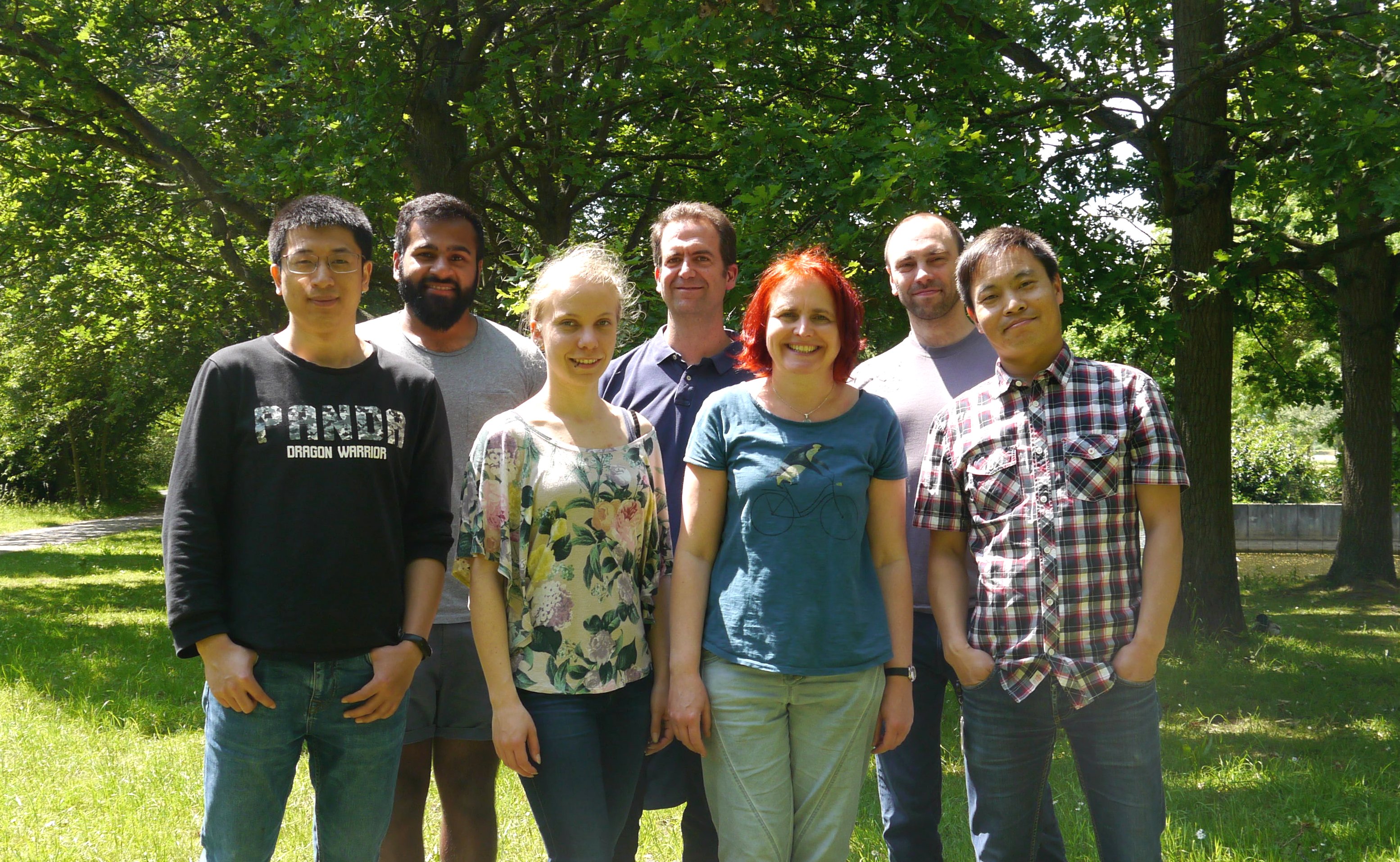
Research Staff
Ritter, Birgit - Research Assistant
+49 511 532 4316 | Ritter.Birgit@MH-Hannover.de
Plückebaum, Nina, Dr. rer. nat. - Postdoctoral Researcher
+49 511 532 4292 | Plueckebaum.Nina@MH-Hannover.de
Brückner, Nadine - PhD student
+49 511 532 4292 | Brueckner.Nadine@MH-Hannover.de
Schenk, Josephine - PhD student
+49 511 532 4292 | Schenk.Josephine@MH-Hannover.de
Mendes Monteiro, Lucas - PhD student
+49 511 532 4292 | MendesMonteiro.Lucas@MH-Hannover.de
Guo, Rongrong - PhD student
+49 511 532 1471 | Guo.Rongrong@MH-Hannover.de
Owen Muyengwa, Tanaka - Master student
+49 511 532 4292 | OwenMuyengwa.Tanaka@MH-Hannover.de
Molnár, Anna - FSJ
+49 511 532 4292 | Molnar.Anna@MH-Hannover.de
Alumni:
Wang, Jiayi, PhD – 2019-2024
Sun, Guorong, PhD - 2018-2024
Jacobsen (nee Jürgens), Carina, Dr. rer. nat. – 2018-2022
Kropp, Kai Alexander, Dr. rer. nat. – 2015-2022
Mendes Passos Kohn, Vania Patricia, PhD – 2021-2022
Zhu, Shuyong, PhD – 2014-2020
Srivaratharajan, Sangar, PhD – 2015-2019
Yu, Pengfei, MD – 2016-2018
Wu, Jing, MD – 2020-2022
Shi, Jingjing, MD – 2019-2021
Gonzalez-Motos, Victor, PhD – 2013-2017
Publications in peer-reviewed journals, Reviews, Book chapters, Comments etc.
Selected Publications:
- Mendes-Monteiro L, Viejo-Borbolla A. 2025. Using structure-function information from IFN-γ-binding proteins and biased agonists to uncouple immunostimulatory and immunosuppressive activities. Trends in Immunology, doi: 10.1016/j.it.2025.02.013
- Jacobsen C, Plückebaum N, Ssebyatika G, Beyer S, Mendes-Monteiro L, Wang J, Kropp KA, González-Motos V, Steinbrück L, Ritter B, Rodríguez-González C, Böning H, Nikolouli E, Kinchington PR, Lachmann N, Depledge DP, Krey T, Viejo-Borbolla A. 2024. Viral modulation of type II interferon increases T cell adhesion and virus spread. Nature Communications; doi: 10.1038/s41467-024-49657-4
- Passos, V., Henkel, L.M., Wang, J., Zapatero-Belinchón, F.J., Möller, R., Sun, G., Waltl, I., Schneider, T., Wachs, A., Ritter, B., Kropp, K.A., Zhu, S., Deleidi, M., Kalinke, U., Schulz, T.F., Höglinger, G., Gerold, G., Wegner, F., and Viejo-Borbolla, A. 2024. Innate immune response to SARS-CoV-2 infection contributes to neuronal damage in human iPSC-derived peripheral neurons. J Med Virol; doi: 10.1002/jmv.29455
- Sun, G., Kropp, K.A., Kirchner, M., Plückebaum, N., Selich, A., Serrero, M., Dhingra, A., Cabrera, J.R., Ritter, B., Bauerfeind, R., Wyler, E., Landthaler, M., Schambach, A., Sodeik, B., Mertins, P., and Viejo-Borbolla, A. 2024. Herpes simplex virus type 1 modifies the protein composition of extracellular vesicles to promote neurite outgrowth and neuroinfection. mBio; doi:10.1128/mbio.03308-23
- Kropp, K., Sun, G., and Viejo-Borbolla, A. 2023. Colonization of peripheral ganglia by herpes simplex virus type 1 and 2. Curr Opin Virol, 60:101333, doi: 10.1016/j.coviro.2023.101333
- Zhu, S., Stanslowsky, N., Fernández-Trillo, J., Mamo, TM., Yu, P., Kalmbach, N., Ritter, B., Eggenschwiler, R., Ouwendijk, WJD., Mzinza, D., Tan, L., Leffler, A., Spohn, M., Brown, RJP., Kropp, KA., Kaever, V., Ha, T-C., Narayanan, P., Grundhoff, A., Förster, R., Schambach, A., Verjans, GMGM., Schmidt, M., Kispert, A., Cantz, T., Gomis, A., Wegner, F., and Viejo-Borbolla, A. 2021. Generation of hiPSC-derived low threshold mechanoreceptors containing axonal termini resembling bulbous sensory nerve endings and expressing Piezo1 and Piezo2. Stem Cell Research, doi: 10.1016/j.scr.2021.102535
- Zhu, S., and Viejo-Borbolla, A. 2021. Pathogenesis and virulence of herpes simplex virus. Virulence, 12:1, 2670-2702, doi: 10.1080/21505594.2021.1982373
- Kropp, K.A., López-Muñoz, A.D., Ritter, B., Martín, R., Rastrojo, A., Srivaratharajan, S., Döhner, K., Dhingra, A., Czechowicz, J.S., Nagel, C.-H., Sodeik, B., Alcami, A. and Viejo-Borbolla, A. 2020. Herpes Simplex Virus Type 2 Counteracts Neurite Outgrowth Repulsion During Infection In A Nerve Growth Factor-Dependent Manner. Journal of Virology, 15:JVI.01370-20. doi: 10.1128/JVI.01370-20
- González-Motos, V., Jürgens, C., Ritter, B., Kropp, K.A., Durán, V., Larsen, O., Binz, A., Ouwendijk, W.J.D., Rovis, T.L., Jonjic, S., Verjans, G.M.G.M., Sodeik, B., Krey, T., Bauerfeind, R., Schulz, T.F., Kaufer, B.B., Kalinke, U., Proudfoot, A.E.I., Rosenkilde, M.M., and Viejo-Borbolla, A. 2017. Varicella zoster virus glycoprotein C increases chemokine-mediated leukocyte migration. PLoS Pathogens, 13(5):e1006346. doi: 10.1371/journal.ppat.1006346. This article was highlighted with a “Press Release” from PLoS Pathogens
- Cabrera, J.R.#, Viejo-Borbolla, A.#, Martinez-Martín, N., Blanco, S., Wandosell, F., and Alcami, A. 2015. Secreted Herpes Simplex Virus-2 glycoprotein G modifies NGF-TrkA signaling to attract free nerve endings to the site of infection. PLoS Pathogens, 11(1):e1004571. doi: 10.1371/journal.ppat.1004571. # Both authors contributed equally
Link to pubmed
Current funding
- Role of Kaposi’s sarcoma-associated herpesvirus complement control protein in cell migration and angiogenesis.
- Identification and characterization of susceptibility factors for VZV latency development and clinical course.
https://www.resist-cluster.de/
- Herpesvirus chromatin programming during de novo infection.
Teaching
Coordinator of the module Infectious Diseases and Diagnostics of the Erasmus Plus Mundus Master Program “Infectious diseases One Health” (IDOH, https://www.infectious-diseases-one-health.eu/) together with Andreas Rummel (Toxicology, MHH) and Nishanth Gopala (Microbiology, MHH).
Lecturer in the PhD Program Center for Infection Biology (ZIB)/Molecular Medicine of the MHH; in the Virology Module of MMH/TiHo; in the MSc Biomedicine – MSc Biochemistry/Biomedicine. Lecturer in the Lower Saxony International Summer Academy (Twincore) and in the MSc in Biomolecules and Cell Dynamics of the “Universidad Autónoma de Madrid”.
